
In the frenetic yet halcyon days of fast-selling Hunter Sonata and Impala cruiser-racers, I foolishly regarded bilge keels as performance sapping abominations. I thought they looked like casually designed afterthoughts sprouting beneath nice hulls and assumed that their sole purpose was to stand a boat on its own two feet.
The boats that our company built, on the other hand, were aimed at people we thought of as serious sailors – and we rashly believed that anything other than a state-of-the-art fin or lifting keel flyer would be unlikely to satisfy them.
But when my personal circumstances underwent a change, I had to think again. Ignoring my prejudices, I spent my own hard earned cash on a second-hand bilge keeler. Why, you may well ask? Simple. My factory and home were on the East Coast but most of the high profile regattas took place down south. So I needed a comfortable floating base that could live on a cheap mud mooring, follow the circuits where the cruiser-racers I built competed, and act as a photo launch and mobile home. A bit of leisurely weekend sailing would be an added bonus. With a limited budget there was one obvious solution. A Westerly Centaur.
Unbeknown to me at the time, this model’s twin keel design had been a game-changer. When Westerly founder and designer Denys Rayner retired and handed over the reins to a young David Sanders he advised him to ask Laurent Giles to design future models.
Rayner was aware of the bilge keel development work this famous design office had done, so he believed they were the most likely to lift bilge keel design to new heights.
It was wise advice. Barry van Geffen (previously with Laurent Giles as a designer, later as a partner and now owner of LG (NZ) Ltd and the LG Archive) told me how the new generation bilge keels as first used on the Centaur came into being.
This story is from the November 2019 edition of Practical Boat Owner.
Start your 7-day Magzter GOLD free trial to access thousands of curated premium stories, and 9,000+ magazines and newspapers.
Already a subscriber ? Sign In
This story is from the November 2019 edition of Practical Boat Owner.
Start your 7-day Magzter GOLD free trial to access thousands of curated premium stories, and 9,000+ magazines and newspapers.
Already a subscriber? Sign In

Orca sink yacht in Strait of Gibraltar
Spain's maritime rescue service, Salvamento Maritimo, has reported that a 15m (49ft) yacht sank in Moroccan waters in the Strait of Gibraltar following interaction with a pod of orca.

No kill cord or lifejackets were worn during fatal powerboat crash
A kill cord and lifejacket are useless unless worn-that's the warning from the Marine Accident Investigation Branch (MAIB), following its investigation into a powerboat crash that killed a 32-year-old woman and five-year-old girl on 2 October 2022.
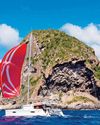
Multihull sail work
Brush up on multihull sailing skills before heading off on charter with Gavin Le Sueur's guide to spinnaker handling, tacking and gybing
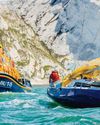
Five top causes of engine failure and how to prevent them
Jake Kavanagh talks to Sea Start marine engineer Nick Eales about how to avoid the five major causes of an engine breakdown at sea
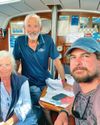
Sail the Atlantic with strangers
Would you sail across the Atlantic with someone you've just met? Ali Wood meets the cruising crews who've done just that

IZIBoat: simple sailing
Rupert Holmes sails an innovative catamaran design intended to widen participation in sailing among those with little time to get on the water in more conventional craft
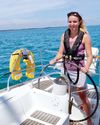
30 WAYS TO GET AFLOAT
From tall ships to small dinghies, you needn't own a boat to sail. Ali Wood looks at the options, and how skippers can also find crew
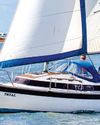
Boats for restoring under £20,000
Duncan Kent picks the best sub-35ft sail and power boats to look for when aiming to undertake a restoration on a budget
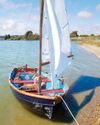
Seaworthy dinghies for less than £500
For low cost traditionally-styled GRP trailer-sailers, consider the Foreland and the Otter available at bargain basement prices
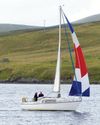
Playing with coloured sails
Maintaining an hourglass-shaped balloon and ratcheting up the log numbers